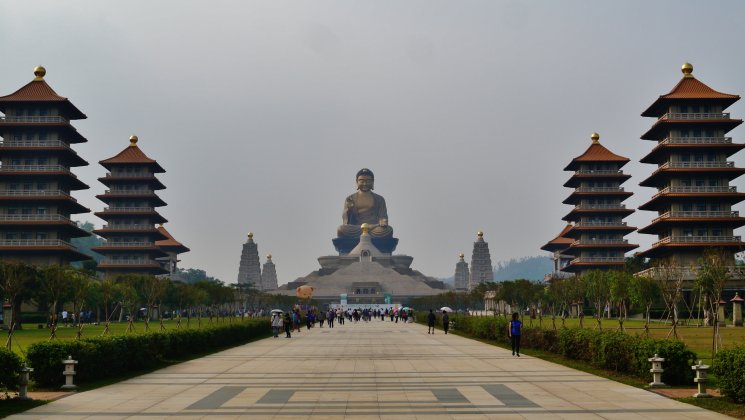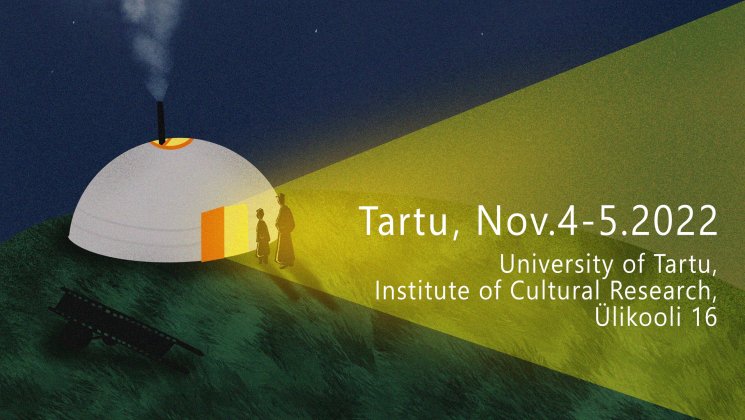-
Faculty of Arts and HumanitiesDean's Office, Faculty of Arts and HumanitiesJakobi 2, r 116-121 51005 Tartu linn, Tartu linn, Tartumaa EST0Institute of History and ArchaeologyJakobi 2 51005 Tartu linn, Tartu linn, Tartumaa EST0Institute of Estonian and General LinguisticsJakobi 2, IV korrus 51005 Tartu linn, Tartu linn, Tartumaa EST0Institute of Philosophy and SemioticsJakobi 2, III korrus, ruumid 302-337 51005 Tartu linn, Tartu linn, Tartumaa EST0Institute of Cultural ResearchÜlikooli 16 51003 Tartu linn, Tartu linn, Tartumaa EST0Institute of Foreign Languages and CulturesLossi 3 51003 Tartu linn, Tartu linn, Tartumaa EST0School of Theology and Religious StudiesÜlikooli 18 50090 Tartu linn, Tartu linn, Tartumaa EST0Viljandi Culture AcademyPosti 1 71004 Viljandi linn, Viljandimaa EST0Professors emeriti, Faculty of Arts and Humanities0Associate Professors emeriti, Faculty of Arts and Humanities0Faculty of Social SciencesDean's Office, Faculty of Social SciencesLossi 36 51003 Tartu linn, Tartu linn, Tartumaa EST0Institute of EducationJakobi 5 51005 Tartu linn, Tartu linn, Tartumaa EST0Johan Skytte Institute of Political StudiesLossi 36, ruum 301 51003 Tartu linn, Tartu linn, Tartumaa EST0School of Economics and Business AdministrationNarva mnt 18 51009 Tartu linn, Tartu linn, Tartumaa EST0Institute of PsychologyNäituse 2 50409 Tartu linn, Tartu linn, Tartumaa EST0School of LawNäituse 20 - 324 50409 Tartu linn, Tartu linn, Tartumaa EST0Institute of Social StudiesLossi 36 51003 Tartu linn, Tartu linn, Tartumaa EST0Narva CollegeRaekoja plats 2 20307 Narva linn, Ida-Virumaa EST0Pärnu CollegeRingi 35 80012 Pärnu linn, Pärnu linn, Pärnumaa EST0Professors emeriti, Faculty of Social Sciences0Associate Professors emeriti, Faculty of Social Sciences0Faculty of MedicineDean's Office, Faculty of MedicineRavila 19 50411 Tartu linn, Tartu linn, Tartumaa ESTInstitute of Biomedicine and Translational MedicineBiomeedikum, Ravila 19 50411 Tartu linn, Tartu linn, Tartumaa ESTInstitute of PharmacyNooruse 1 50411 Tartu linn, Tartu linn, Tartumaa ESTInstitute of DentistryL. Puusepa 1a 50406 Tartu linn, Tartu linn, Tartumaa ESTInstitute of Clinical MedicineL. Puusepa 8 50406 Tartu linn, Tartu linn, Tartumaa ESTInstitute of Family Medicine and Public HealthRavila 19 50411 Tartu linn, Tartu linn, Tartumaa ESTInstitute of Sport Sciences and PhysiotherapyUjula 4 51008 Tartu linn, Tartu linn, Tartumaa ESTProfessors emeriti, Faculty of Medicine0Associate Professors emeriti, Faculty of Medicine0Faculty of Science and TechnologyDean's Office, Faculty of Science and TechnologyVanemuise 46 - 208 51003 Tartu linn, Tartu linn, Tartumaa ESTInstitute of Computer ScienceNarva mnt 18 51009 Tartu linn, Tartu linn, Tartumaa ESTInstitute of GenomicsRiia 23b/2 51010 Tartu linn, Tartu linn, Tartumaa ESTEstonian Marine Institute0Institute of PhysicsInstitute of ChemistryRavila 14a 50411 Tartu linn, Tartu linn, Tartumaa EST0Institute of Mathematics and StatisticsNarva mnt 18 51009 Tartu linn, Tartu linn, Tartumaa EST0Institute of Molecular and Cell BiologyRiia 23, 23b - 134 51010 Tartu linn, Tartu linn, Tartumaa ESTTartu ObservatoryObservatooriumi 1 61602 Tõravere alevik, Nõo vald, Tartumaa EST0Institute of TechnologyNooruse 1 50411 Tartu linn, Tartu linn, Tartumaa ESTInstitute of Ecology and Earth SciencesJ. Liivi tn 2 50409 Tartu linn, Tartu linn, Tartumaa ESTProfessors emeriti, Faculty of Science and Technology0Associate Professors emeriti, Faculty of Science and Technology0Institute of BioengineeringArea of Academic SecretaryHuman Resources OfficeUppsala 6, Lossi 36 51003 Tartu linn, Tartu linn, Tartumaa EST0Area of Head of FinanceFinance Office0Area of Director of AdministrationInformation Technology Office0Administrative OfficeÜlikooli 17 (III korrus) 51005 Tartu linn, Tartu linn, Tartumaa EST0Estates Office0Marketing and Communication OfficeÜlikooli 18, ruumid 102, 104, 209, 210 50090 Tartu linn, Tartu linn, Tartumaa EST0Area of Vice Rector for Academic AffairsOffice of Academic Affairs0University of Tartu Youth AcademyUppsala 10 51003 Tartu linn, Tartu linn, Tartumaa EST0Student Union OfficeÜlikooli 18b 51005 Tartu linn, Tartu linn, Tartumaa EST0Centre for Learning and TeachingArea of Vice Rector for ResearchUniversity of Tartu LibraryW. Struve 1 50091 Tartu linn, Tartu linn, Tartumaa EST0Grant OfficeArea of Vice Rector for DevelopmentCentre for Entrepreneurship and InnovationNarva mnt 18 51009 Tartu linn, Tartu linn, Tartumaa EST0University of Tartu Natural History Museum and Botanical GardenVanemuise 46 51003 Tartu linn, Tartu linn, Tartumaa EST0International Cooperation and Protocol Office0University of Tartu MuseumLossi 25 51003 Tartu linn, Tartu linn, Tartumaa EST0Area of RectorRector's Strategy OfficeInternal Audit Office
Tantra in India: Paulson Lectures in the Study of Religion

In cooperation with the School of Theology and Religious Studies of the University of Tartu, the Estonian Society for the Study of Religions is organizing the first Ivar Paulson lectures in the study of religion. This year the lectures will be held by the well-known scholar of Indian Tantra, Paolo E. Rosati. He is a distinguished scholar of Indian Tantra, in particular of its historical development in the wider social, cultural and religious context.
You can watch the lectures on our Youtube.
Dates and location:
02.11.2022 – 16:15-17:45 at Ülikooli 18-139: Tantra and Beyond
03.11.2022 – 16:15-17:45 at Ülikooli 18-139: The Cult of the Goddess Kāmākhyā (Assam)
04.11.2022 – 14:15-15:45 at Ülikooli 18-139: Blood, Sex, and Magic: The Power of the Yonipīṭha at Kāmākhyā
Paolo E. Rosati is an independent scholar based in Rome (Italy). He obtained a PhD in ‘Asian and African Studies’ (South Asian Section) from Sapienza University of Rome (2017). Since 2016 he has regularly published articles on the yoni cult at Kāmākhyā in peer-reviewed journals and collective volumes. His publications include a double special issue on Tantra for Religions of South Asia (vol. 14, nos. 1–2) and a volume (coedited with Andrea Acri) entitled, Tantra, Magic, and Vernacular Religions in Monsoon Asia: Texts, Practices, and Practitioners from the Margins (Routledge Studies in Tantric Traditions). Actually, he is editing an upcoming volume Magic, the Supernatural, and Danger across Pre-Modern and Modern Monsoon Asia. Paolo’s main field of research is the medieval and pre-modern development of Assamese Tantra, although nowadays his research’s focus is expanding to the intersection of Tantra, magic, gender, and memory in the modern period.
Ivar Paulson lectures is a lecture series organized by the Estonian Society for the Study of Religions that focus on the most noteworthy topics, issues and new developments in the contemporary study of religion. Ivar Paulson (1922-1966) was known for the wide range of peoples, religious beliefs and practices he was interested in and which he studied by combining a number of different research approaches. Similarly, Paulson lectures aim to highlight and bring together some of the more significant developments from various approaches and perspectives in the contemporary study of religion.
Tantra and Beyond
02.11.2022 – 16:15-17:45 at Ülikooli 18-139
This lecture is a short introduction to Tantra as a religious phenomenon related not only to the Sanskritic élite and its textual production (such as, e.g., the highly philosophical Kashmiri Śivaism and its non-dualistic view of the universe) but also to the cross-cultural dialectic between Brahmanism and non-mainstream religions, such as tribal and folk traditions. After an analysis of the proposed definitions of Tantra in the history of the studies, the characteristics of Tantra will be point out in order to explain the problematic identification of Tantra as an univocal category because the extreme fluidity of its elements. Hence, also a differentiation between left-hand and right-hand or soft-core and hard-core Tantra emerges as a flawed attempt of classification. Finally, the controversial issue regarding the ‘birth’ of Tantra will be discussed highlighting the possibility of a multiple origin of what we call Tantra.
The Cult of the Goddess Kāmākhyā (Assam)
03.11.2022 – 16:15-17:45 at Ülikooli 18-139
The mythology of the goddess Kāmākhyā was introduced in the early medieval Kālikāpurāṇa (ninth–eleventh century CE), a Śākta text that linked the yoni of Satī to the Assamese goddess Kāmākhyā. This lecture will analyse the medieval and pre-modern Purāṇas and Tantras compiled in northeastern India—focusing on their mythological accounts of the cosmogony of the yoni-pīṭha—in order to outline the intersection of Kaula-Tantra and Purāṇic elements in the formation of the Goddess’s cult at Kāmākhyā.
Blood, Sex, and Magic: The Power of the Yonipīṭha at Kāmākhyā
04.11.2022 – 14:15-15:45 at Ülikooli 18-139
This lecture explores the connection between Tantra and the magic tradition of Nīlācala in Assam in order to explain the encounter between Brahmanism and magic. First, the doctrinal, ritual, and mythical background of the cult of the Goddess Kāmākhyā, whose roots go back to the esoteric sexual path of Kaula Tantra praxis will be discussed. Having traced the history to this path, which around the 10th century switched from blood sacrifice to a mystic-erotic ritual centred on the yoni-pūjā (worship of the vulva), homologizing blood offerings and erotic rituals focusing on the human body as a source of sexual fluids necessary to obtain such supernatural accomplishments (siddhis), this lecture then examines the concept of siddhi as a ‘magical power’ that can be acquired only by those belonging to the kula (clan), the only ones who know the yoni’s secret (the restricted transmission of siddhis over kula’s generations being a complement to the ideology of blood sacrifice). Finally, it considers the intersection of indigenous traditions and Brahmanical ritual praxis in Assam as the source of the peculiar cult of the yoni of Kāmākhyā. From this discussion, Assamese Tantra emerges as a religious phenomenon that crosses socio-cultural boundaries and encompasses apparently irreconcilable categories.
Tantra in India: Paulson Lectures in the Study of Religion
Read more similar news






